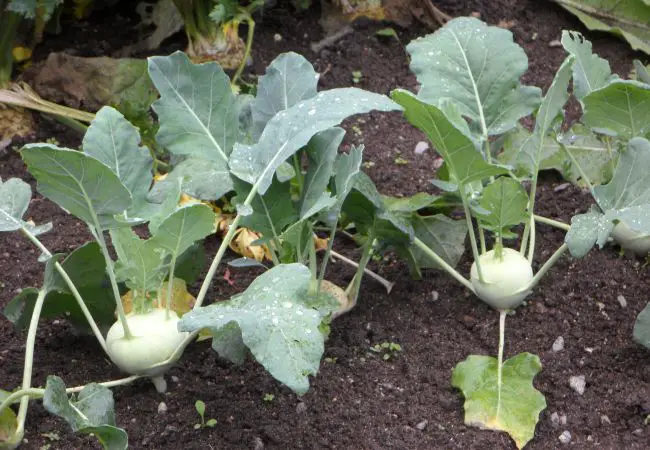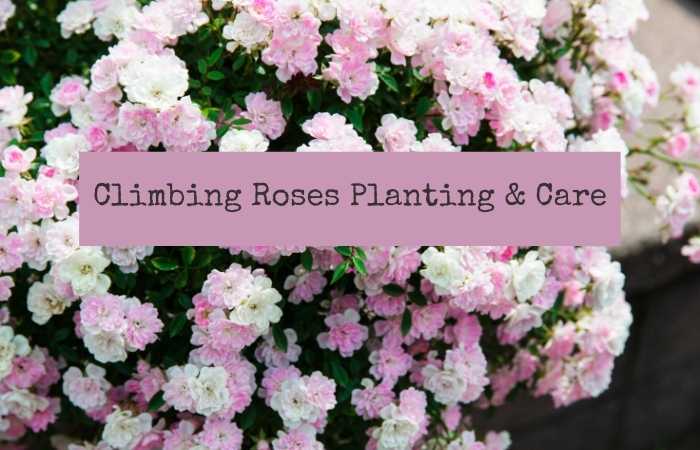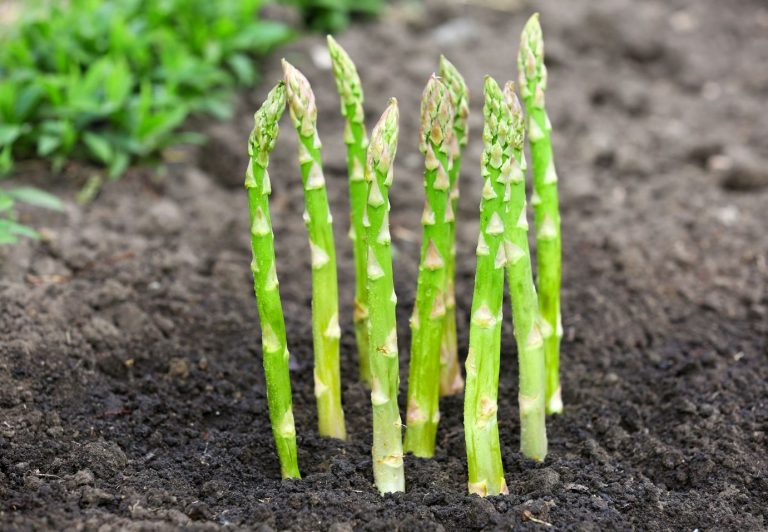Kohlrabi Care Guide and Benefits

This kohlrabi care guide and benefits will tell you everything you need to know about growing and eating kohlrabi. Kohlrabi is a lesser-known gem in the brassica family and is also known as a German turnip.
Kohlrabi Care Guide and Benefits
Kohlrabi has been gaining popularity for its unique flavor, nutritional benefits, and culinary versatility.
I have grown kohlrabi for a while and they are among the easy vegetables to grow and care for and they always provide a bountiful harvest.
In this comprehensive guide, I will explore everything you need to know about growing and caring for kohlrabi, as well as its remarkable health benefits and delicious culinary uses.
Description and Appearance of Kohlrabi
Kohlrabi, also known as the “German turnip,” is a cool-season vegetable that resembles a swollen turnip or cabbage with a hint of broccoli. It features a round or bulbous shape with leafy greens on top.
Varieties of Kohlrabi
Kohlrabi comes in various colors and sizes, including green and purple varieties. Common cultivars include ‘White Vienna,’ ‘Purple Vienna,’ and ‘Kossak.’
The nutritional profile of kohlrabi
Kohlrabi is a nutritional powerhouse, packed with essential vitamins (C, K, and B-complex), minerals (potassium, calcium, and iron), dietary fiber, and antioxidants. Its low-calorie content makes it an excellent choice for weight management.
How To Grow Kohlrabi
Soil Requirements for kohlrabi cultivation
Kohlrabi thrives in well-drained, loamy soil with a pH range of 6.0 to 7.5. Enriching the soil with organic matter, such as compost, helps improve its fertility and drainage. Ideal climate and temperature for growing kohlrabi
Kohlrabi prefers cool temperatures and is ideally grown in spring or fall. It thrives in regions with average temperatures between 50°F and 75°F (10°C and 24°C).
Steps for planting kohlrabi seeds or transplants
- Start seeds indoors 4-6 weeks before the last frost or sow them directly into the garden.
- Plant seeds or transplants in well-prepared soil, spacing them 6-8 inches apart.
- Water gently but consistently, ensuring the soil remains moist.
- Provide adequate sunlight (6-8 hours) for optimal growth.
Watering and fertilizing kohlrabi plants
Kohlrabi plants require regular watering, particularly during dry periods. Maintain consistent soil moisture but avoid overwatering, which can lead to root rot. Apply a balanced fertilizer once a month to promote healthy growth.
Common kohlrabi pests and diseases and their management
Kohlrabi may be susceptible to pests like cabbage worms, flea beetles, and aphids. Implementing organic pest control methods, such as handpicking or using neem oil, can help manage these issues.
Diseases like clubroot and powdery mildew can be prevented by crop rotation and ensuring good air circulation around plants.
Thinning and spacing kohlrabi plants
Thinning overcrowded kohlrabi seedlings promotes better growth. Maintain a spacing of 6-8 inches between plants to allow ample room for bulb development.
Mulching Kohlrabi
Apply a layer of organic mulch around kohlrabi plants to conserve moisture, suppress weeds, and regulate soil temperature.
Pruning and maintaining kohlrabi plants
Remove any yellow or damaged leaves regularly to encourage the growth of healthier leaves and bulbs. Inspect for signs of pests or diseases and take necessary action promptly.
Kohlrabi Growing Tips
Regularly inspect kohlrabi plants for signs of pests, diseases, or nutrient deficiencies. Common issues include yellowing leaves, stunted growth, or wilting.
Address these problems by identifying the underlying cause and taking appropriate measures, such as adjusting watering, applying organic insecticides or fungicides, or providing necessary nutrients through fertilization.
Harvesting and Storing Kohlrabi
Signs of Readiness for Harvest
Kohlrabi bulbs are ready for harvest when they reach a size of 2-3 inches in diameter. They should feel firm and have smooth skin.
Proper techniques for harvesting kohlrabi
Gently pull the entire plant out of the ground or use a sharp knife to cut the stem just above the bulb. Remove the leaves, leaving about an inch of the stem attached to the bulb.
Storage tips to prolong kohlrabi’s shelf life
Kohlrabi can be stored in the refrigerator for up to two weeks. Remove the leaves before storing them and place the bulbs in a perforated plastic bag to maintain moisture and prevent dehydration.
Health Benefits of Kohlrabi
Rich source of essential nutrients and vitamins
Kohlrabi is a nutrient-dense vegetable, offering an abundance of vitamins C, K, and B-complex, along with minerals like potassium, calcium, and iron. These nutrients support overall health and contribute to a strong immune system.
High in dietary fiber and beneficial for digestion
With its high fiber content, kohlrabi promotes healthy digestion, aids in regular bowel movements, and helps prevent constipation.
Antioxidant properties and potential anti-inflammatory effects
Kohlrabi contains antioxidants like vitamin C and phytochemicals that help neutralize harmful free radicals, reducing the risk of chronic diseases and supporting overall cellular health.
Impact on heart health and cholesterol levels
The presence of potassium in kohlrabi contributes to maintaining healthy blood pressure levels, while its low-calorie and low-fat content make it a heart-healthy choice. Additionally, its fiber content can help reduce LDL cholesterol levels.
Culinary Uses of Kohlrabi
Popular Recipes and cooking methods for Kohlrabi
Kohlrabi can be enjoyed both raw and cooked. Popular recipes include kohlrabi slaw, roasted kohlrabi, kohlrabi fries, and kohlrabi soup.
It can also be steamed, stir-fried, or added to salads for a crisp and refreshing taste.
Incorporating kohlrabi into salads, soups, and stir-fries
Grated or thinly sliced kohlrabi adds a delightful crunch to salads, while its mild flavor blends well with other vegetables in soups and stir-fries.
Fermentation and pickling options for preserving kohlrabi
Kohlrabi can be pickled or fermented, allowing for its preservation and creating tangy, probiotic-rich condiments that enhance flavor and promote gut health.
Final Thoughts on Kohlrabi Care
I love kohlrabi because it is a versatile and nutritious vegetable that deserves a place in my garden and on my plate.
By following the guidelines for growing and caring for kohlrabi, you can also enjoy a bountiful harvest of these delicious bulbs.
Not only does kohlrabi offer numerous health benefits, but its unique taste and culinary adaptability make it a valuable addition to a wide range of recipes.
I hope this post on kohlrabi care guide and benefits helps you embrace the wonders of kohlrabi and explore the endless possibilities it brings.
If you love gardening and houseplants, please follow me on Multigardening Pinterest for more awesome posts.






